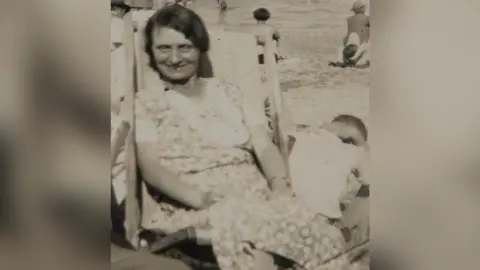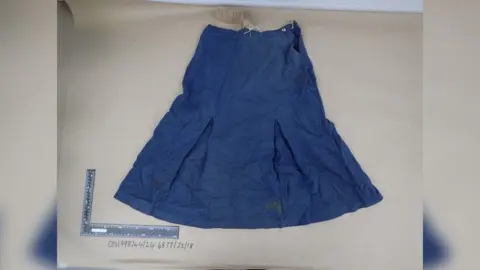'Billion to one' DNA match in 60-year-old murder
 PA Media/Elizabeth Cook
PA Media/Elizabeth CookIt is "extremely" likely sperm cells detected on the skirt of a woman killed in the 1960s come from a man convicted of raping two elderly women a decade later.
Ryland Headley, now 92, is on trial for the rape and murder of Louisa Dunne at her home in Britannia Road, Easton, Bristol, on 28 June 1967, after a cold case review identified his DNA.
Mrs Dunne, 75, was found lying on the floor of her front room "on her back with her stockings down and knickers round her ankles", the court was told.
A forensic scientist told Bristol Crown Court there was a "billion to one" chance the semen originated from someone else. Mr Headley, of Clarence Road in Ipswich, denies both charges.
The defendant was jailed for the rape of two elderly women in 1977, and asked for 10 burglaries to be taken into account when he was sentenced.
But he was not linked to Mrs Dunne's murder until Avon and Somerset Police conducted a review of the case in 2023.
Forensic scientist Andrew Parry conducted DNA analysis of samples of pubic hair and clothing from Mrs Dunne, including her skirt, and compared them to swabs taken from the inside of Mr Headley's cheek.
Mr Parry said he had tested sections of the skirt where he expected semen to be found.
"I understood there was semen on the vaginal swabs. If there was semen in the vagina I would anticipated that semen could well have drained from the body on to the skirt, in particular on to the back of the skirt."
 Avon and Somerset
Avon and SomersetMr Parry explained the volume of sperm cells found on the sample taken from Mrs Dunne's skirt was at the top end of the scale used by forensic scientists to measure the size of a sample.
"I checked the two samples and the profile of Mr Headley matched the DNA profile from the sperm."
"If it's accepted that the sperm originated from Mr Headley then the findings are what we'd expect if Mr Headley had been involved in some sexual activity with Louisa Dunne," he said.
Mr Parry said it was a "billion times" more likely that the sperm cells originated from the defendant than from an unknown person.
He added: "Semen that is deposited on to clothing can persist for a long time, if you wash it thoroughly you may get rid of it but it may persist even if you wash it. It can last for many years."
 Avon and Somerset Police
Avon and Somerset PoliceThe court also heard from Josephine Marks, a former officer with Avon and Somerset Police's major crime review team between 2009 until her retirement in 2015, who examined exhibits relating to Mrs Dunne's case.
She said she remembered "very little" of the case, but in a notebook she had marked whether each bag of evidence had been found opened or sealed.
She had noted the bag containing the skirt had been unsealed while in storage.
The trial continues.
Follow BBC Bristol on Facebook, X and Instagram. Send your story ideas to us on email or via WhatsApp on 0800 313 4630.
